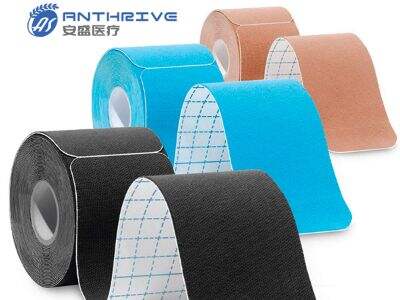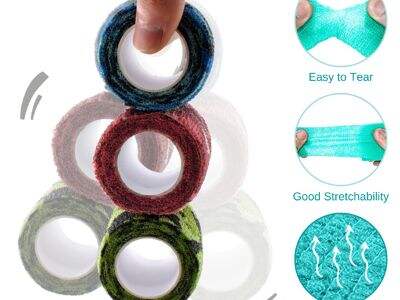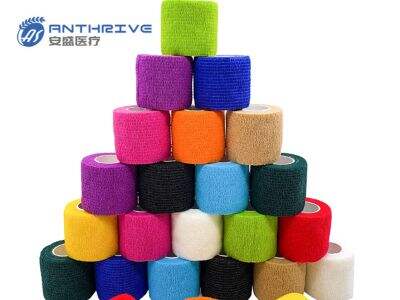Moos said band-aids are kind of like superheroes for our boo-boos. They protect our cuts and scrapes so they heal faster. It has different types of bandages for different types of wounds. Join us on a journey through the world of medical bandages and discover the best one for you!
So How Can We Bandage an Injured Body Part?
Gauze bandages are the soft blankets for our wounds. A new remedy keeps it from getting sweaty, and infection-prone: they are woven of a material that allows air to circulate through, encouraging our skin to breathe whilst it heals. Adhesive bandages, with their sticky strips, don’t require a small piece of tape to stay where they are. They’re wonderful for little cuts and scrapes. They're like magic wraps called self-adherent bandages. They adhere to themselves but not on our skin or hair. [Follow New York Times Cooking on Pinterest]They work well for wrapping joints or areas that move a lot.

How to Select a Bandage That’s Right for You
Consider the size and location of the wound when choosing a bandage. For minor cuts and scrapes, adhesive bandages are typically your best bet. They come in fun colors and designs, so at least they’re cheerful for a boo-boo. Gauze bandages are a good option for larger wounds or in areas that need support. The material can be wrapped around the wound and secured with tape. Self-adhering bandages are fantastic for joints or spots that require movement since they can wrap right around without hindering movement.
The Pros and Cons of Specific Bandages
Adhesive bandages are simple to put on, and they are available in a variety of sizes and styles. They are great for quick fixes on tiny cuts and scrapes. But they may not be effective for larger injuries or areas that require extra coverage. Gauze bandages are highly absorbent and allow air to circulate, which works well for larger wounds that should remain dry. However, they will sometimes need tape to hold them on, which can be a little tricky. Self-adherent bandages are stretchy and good for joints. But they may not protect as well as gauze bandages for larger wounds.
Why Good Wound Care is Essential
Wound care is essential for recovery. That is cleaning the wound, putting on the appropriate bandage and changing it regularly to prevent infection.” Picking the best bandage for your wound allows it to heal better and not deteriorate. Gauze is good for larger wounds that require more attention, while even a small adhesive bandage will help if you have a little cut. Self-adherent bandages work perfectly for areas that require movement. The proper bandage and good wound care can help your boo-boos heal faster.

The Band-Aid That Works — and That One That Doesn’t
All of these types of bandages have their own advantages and disadvantages. Adhesive bandages are suitable, simple, and quick for small cuts and scrapes. Gauze bandages are highly absorbent and airy, but good for gouges and larger wounds. Self-adherent bandages are flexible, and can wrap around joints. Once you know what each bandage is capable of, you can determine which one is best for your wound.
So, the proper bandage can lead to wound healing in the right direction. Each type, whether gauze, adhesive, or self-adherent, offers unique benefits. By knowing what sets these bandages apart and selecting the right option, you can help your boo-boos heal better. Bottom line: Make sure you’re taking care of your wounds properly and using the appropriate bandage and your boo-boos should be safe and healing. Boo-boos can take a while to heal, but compared to putting a bandage on it.

 EN
EN
 AR
AR
 BG
BG
 HR
HR
 CS
CS
 DA
DA
 NL
NL
 FI
FI
 FR
FR
 DE
DE
 EL
EL
 IT
IT
 JA
JA
 KO
KO
 NO
NO
 PL
PL
 PT
PT
 RO
RO
 RU
RU
 ES
ES
 SV
SV
 TL
TL
 ID
ID
 LV
LV
 LT
LT
 SR
SR
 SK
SK
 SL
SL
 UK
UK
 HU
HU
 TH
TH
 TR
TR
 MS
MS
 GA
GA
 BE
BE
 IS
IS
 HY
HY
 MN
MN
 MY
MY
 UZ
UZ
